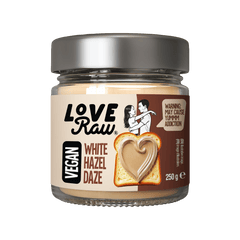Why Does Chocolate Bloom?
It’s the Summer of LoveRaw and we’re here to #SaveYourSummer one chocolate bar at a time.
But as the seasons change, so does the weather, (well for most of us). Despite being in the Northern Hemisphere, on the odd occasion, we’re often at the mercy of a heatwave. And a Great British heatwave is not something to mess with, especially when it comes to chocolate.
Back in July, we had to delay our shipping due to the heatwave where temperatures were hitting over 30 degrees and that’s a big deal for our industry.
But it wasn’t just the chocolate that was melting, us staff were too. So much so, that we had to deploy a fleet of fans to keep us ticking over at LoveRaw HQ.
So now we’re feeling cool and hydrated we turned our attention to the star of the show, our chocolate.
After logging into our customer service portal on a Monday morning, we realised one thing that all our complaints had in common. ‘Why has my chocolate separated?’, ‘Why has my chocolate melted?’, ‘My chocolate has a strange texture, can I eat it?’
This was a big deal.
We like to keep our customers happy and we certainly don’t like to keep them waiting for their chocolate, so we’re here to tell you why we had to put a stop to our shipping and why (when it’s hot), we might have to do it again.

What Is Chocolate Bloom?
To an untrained eye, a bloomed piece of chocolate often appears as chocolate that has a strange texture on its surface. Texturally this is often very chalky and doesn’t look the most appetising. Whilst you still can eat your chocolate when it’s bloomed, it might not taste it’s very best.
Why Does Chocolate Bloom?
Essentially, chocolate bloom happens when your chocolate is exposed to rapid temperature changes. For example: from warehouse, to lorry, to courier and eventually to your house.
This can also happen if you keep your vegan chocolate in your fridge and take it outside on a warm day.
The Two Types Of Chocolate Bloom
Fat Bloom
Fat bloom happens when the cocoa butter in the chocolate melts. This causes the chocolate to crystallise and in turn, forms a pale white coating on the surface of the chocolate. You’ll know if your chocolate has fat blooming if you spot this colour change and if your choc no longer snaps.
Sugar Bloom
Similarly, to fat bloom, sugar bloom also has a white surface texture but another characteristic to look out for, is a grainy texture.
This process will usually happen again, due to temperature shock aka if you store your chocolate in a humid atmosphere.
If you take a look at our packaging, we always recommend storing your chocolate in a cool, dry place. If you follow these steps, you’ll be onto a winner.

Can I Eat Bloomed Chocolate?
Whilst the overall appearance might be affected, you can still eat bloomed chocolate. The taste, texture and smell will remain intact and surely that’s all that counts, right?
We personally would never turn our back on a bar of chocolate, bloomed or not. And as we all know, it’s what on the inside that counts, plus there’ll be less waste for the environment so it’s another win for us and the planet!
How To Repair Bloomed Chocolate
Unfortunately, we can’t wave our magical chocolate wand and erase the damage done but we do recommend you still eat it. However, if you’re not sold, why not have a go at baking with it.
What To Do If I Receive Bloomed Chocolate?
Your first port of call is to enjoy it and EAT is as it is still absolutely fine to do so. Then if you’re still not happy then we send a message to our dab customer service department. Your first port of call will be our customer service department. We will aim to answer any of your messages from Monday to Friday 9am - 5pm. You can also contact us on any of our social channels, including Facebook and Instagram.















